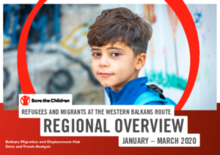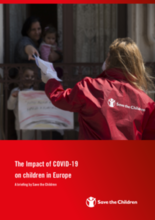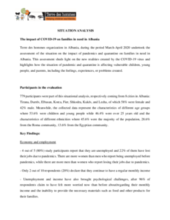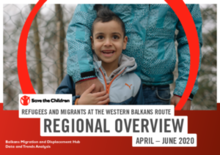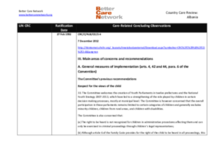Displaying 1 - 10 of 30
Almost 20% of unaccompanied child migrants from Albania taken in by Kent County Council this year have disappeared, the BBC has found. The local authority took in 197 Albanian children up to 31 October, 39 of whom have gone missing.
In this consultation,10 girls and 10 boys in Albania and Kosovo were interviewed and shared their views and experiences of the outbreak of COVID-19. Additionally, 515 girls and boys were surveyed to understand the impact of the pandemic on their lives.
Researchers are increasingly using self-report measures of physical, psychological, and sexual violence and neglect for population-based surveys. The current gold-standard measure, the 45-item ISPCAN Child Abuse Screening Tool has been used across the world. This study assesses its adequacy for measuring abuse across countries.
This report describes key trends in migrations in the region, detailing information about the number of people on the move, demography (age, sex, country of origin, etc), behavioral patterns, and routes in use - with a focus on children, particularly unaccompanied children.
This paper is divided into two parts: The first details the evidence from the ground, painting the picture of life for children during the pandemic in different European countries with statistics and examples, and giving a set of recommendations on measures that national governments across Europe can take to help protect children from the worst impacts of the crisis relating to the economic impacts on families, loss of services, access to education and targeted measures for children in migration. The second part focuses on recommendations to the EU institutions on how EU policy and funding can support and complement these national-level actions in these challenging times.
This assessment sheds light on the new realities created by the COVID-19 virus and highlights how the situation of pandemic and quarantine is affecting vulnerable children, young people, and parents, including the feelings, experiences, or problems created.
Data and Trend Analysis (DATA) Refugees and Migrants at the Western Balkans Route Regional Overview, covering period April – June 2020, describes key trends in migrations in the region, detailing information about the number of people on the move, demography (age, sex, country of origin, etc), behavioral patterns, and routes in use - with a focus on children, particularly unaccompanied children.
Join this webinar to walk through the PROMISE Child Participation Tool and to discuss approaches and considerations for soliciting children’s views on their Barnahus experience.
This country care review includes the Concluding Observations of the Committee on the Rights of the Child and the Committee on the Rights of Persons with Disabilities. The Committees' recommendations on the issue of Family Environment and Alternative Care, and other care relevant issues, are highlighted.
The purpose of this webinar is to shed light on the specific experiences and issues of unaccompanied and separate girls in the European Response.


